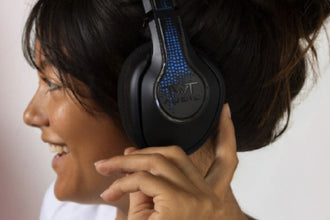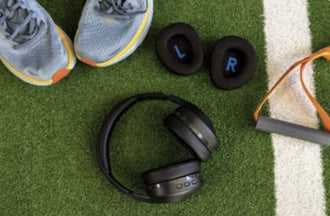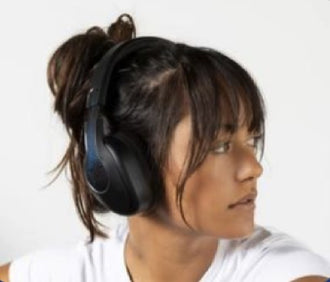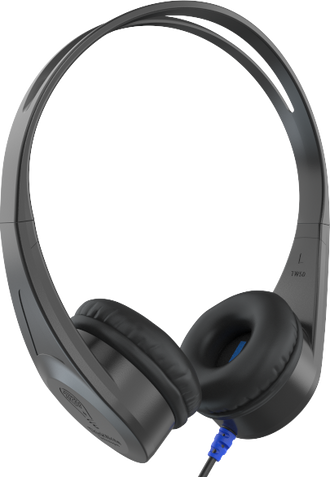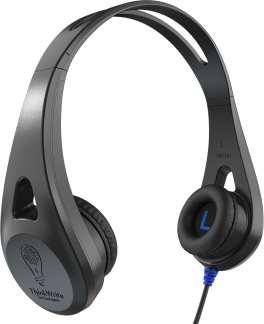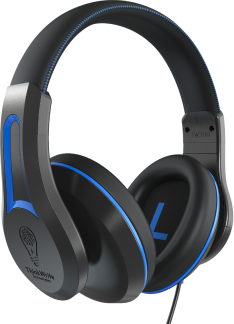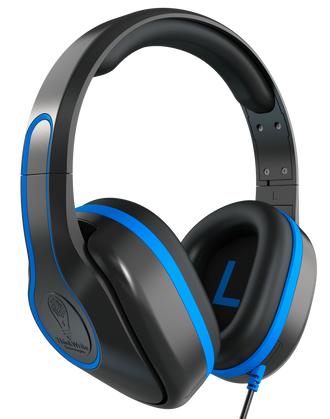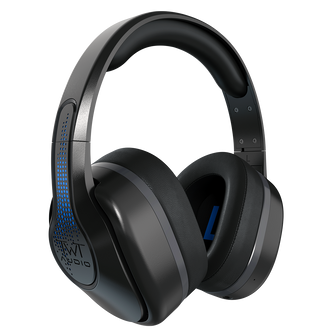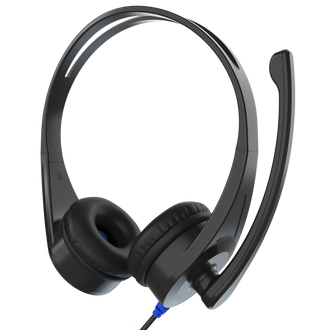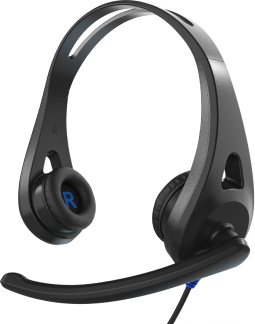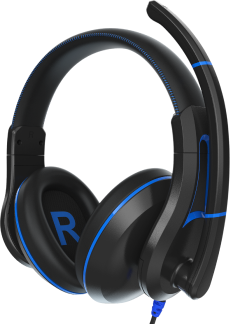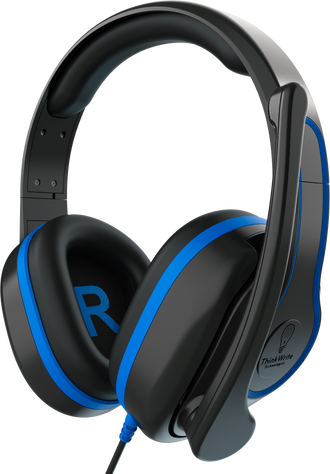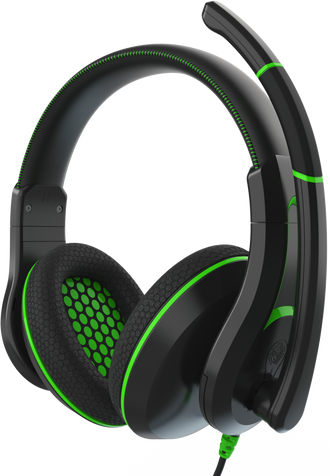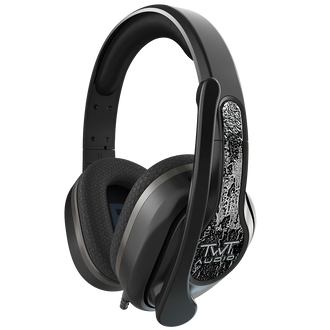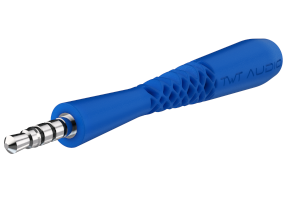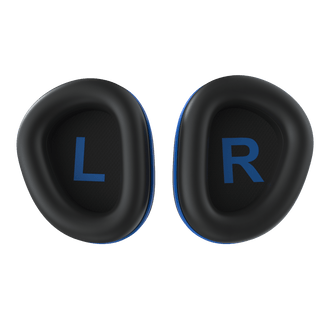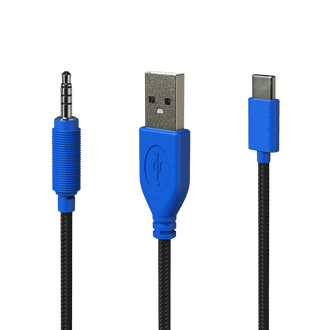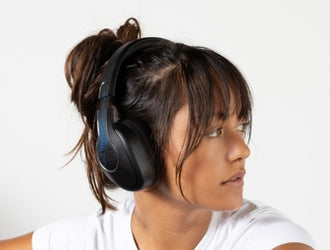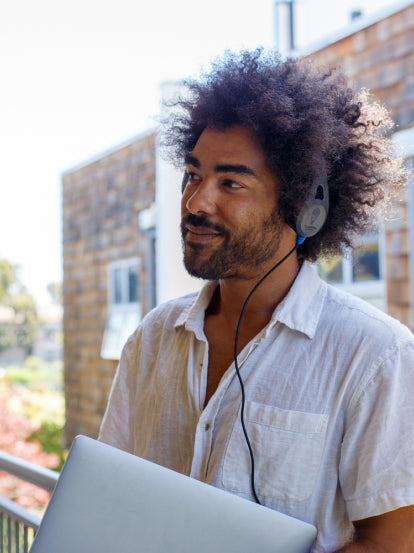A question we frequently field from both parents and educators is, “How do I know which type of headphone or headset is the best option for my child/student?” With so many available to choose from, ThinkWrite understands that researching audio devices for your little listeners may leave you with more questions than answers. Whether you’re planning ahead to make sure your child is set up to succeed in distance learning initiatives in a post-Covid world, or investing in the best listening device to keep them engaged with educational programs and apps over the summer, we want to help you identify the best option. Here’s a brief guide to what you should look (and listen) for based on your child’s individual needs:
Headphones vs. Headsets
Will your child only be using their audio device for listening? If so, headphones are a perfectly suitable (and more cost-effective) choice. If they’ll be using apps or computer programs that require them to speak to another person or record their own voice, a headset will be the best option. Be certain to select a headset outfitted with a microphone boom that cannot be bent towards or pulled into the mouth. This will help prevent the spread of germs and extend the life of the headset; moisture will damage the microphone capsule inside of the boom.
3.5mm vs. USB Plug
A common misconception is that listening devices with a 3.5mm jack provide different sound quality than those with USB plug. The main difference between the two types of plugs are that 3.5mm jacks transmit an analog audio source directly to a listening device, whereas the USB plug uses a digital-to-analog converter to change the digital signal into audio in order to transmit that same audio source.
Other than that, there’s no difference in the quality of sound or comfort experienced with a 3.5mm jack or USB plug device. Common devices that use 3.5mm jacks include most iPads, tablets, and Chromebooks. USB inputs are also often found on Chromebooks, desktop computers, and other devices. Make sure to check out the personal computing device to which your child will be listening in order to decide which type of plug it will require.
Fit
Listening devices for children need to cover a broad sizing spectrum because they grow so quickly and come in so many different sizes. An obvious feature that you’ll be looking for is adjustable sizing, but for many manufacturers, adjustable arm length will only go so far. Models like ThinkWrite’s Ultra Ergo product line are fitted and tested on people ages 5 through 65. This is an important attribute to look for in headphones and headsets. A comfortable, ergonomic fit on any sized head will make sure that listening devices stay put and direct sound into the ear in a safe way.
Over-Ear vs. On-Ear
Whether your child will enjoy an over-the-ear versus an on-ear listening device is entirely subjective. Regardless of the shape or type of ear cushion, headphones and headsets like those manufactured by ThinkWrite have the same maximum decibel level, so the most important question is really which model your child is most comfortable wearing.
Some children feel uncomfortably confined and claustrophobic wearing over-ear models. In that case, an on-ear headphone like the Ultra Ergo TW100 is a great choice because it sits gently on the ear and applies just enough compression to deliver high quality audio while still allowing the listener to hear external instructions or guidance. On the other hand, children who are more sensitive to external stimuli may benefit from an over-ear model that cuts out more of the subtly distracting sounds of a busy classroom or home and keeps them focused.
Sound Curve
Any headphone or headset you purchase for your child should ensure their sensitive ears remain protected at all times. Did you know that mid-range frequencies are the frequencies that most people experience as hearing loss as they approach older age? Constant exposure to mid-range frequencies and high decibel levels during extended periods of headphone usage can be detrimental to the long-term auditory health of young listeners.
Find headphones or headsets with gentle audio curves that minimize those dangerous mid-range frequencies, while limiting decibel levels to under 100. Based on our experience in the classroom, decibel levels of lower than 90 can result in a struggle to hear the audio material over the buzz and din of other students.
Durability
Kids are active and inquisitive forces of energy — it’s important to pick a tough headphone that will stand up to their fidgeting, chewing, and constant motion if you want to avoid buying a new pair every few months. Headphones and headsets used daily should include the following features to help prolong their lifespan: an adjustable headband constructed with ABS plastic (a lightweight, bendable polypropylene thermoplastic that ensures maximum durability), chew-resistant braided fabric cords, audio jack with reinforced steel-center pin, and easy-to-clean leatherette ear cushions.
With qualities like these, you don’t need to worry about headphones or headsets being bent, twisted, pulled on, sat on, or immediately outgrown, especially when paired with a comprehensive 1 or 2 year warranty.
Feeling overwhelmed by all of the boxes that need to be checked off to find your child the right listening device? Don’t worry. Whether you’re looking for an on-ear headphone for comfortable long-listening periods like the Ultra Ergo TW100, an over-ear headset for recording clear and articulate vocals like the Ultra Durable headset, or a hybrid like the soon-to-be-released Ultra Ergo TW110 on-ear headset, ThinkWrite has the model to keep your child plugged in.
Ready to select your child’s new headphones or headset? Shop now and use discount code TAKE15TWT to unlock 15% off your TWT Audio purchase on www.twtaudio.com.

